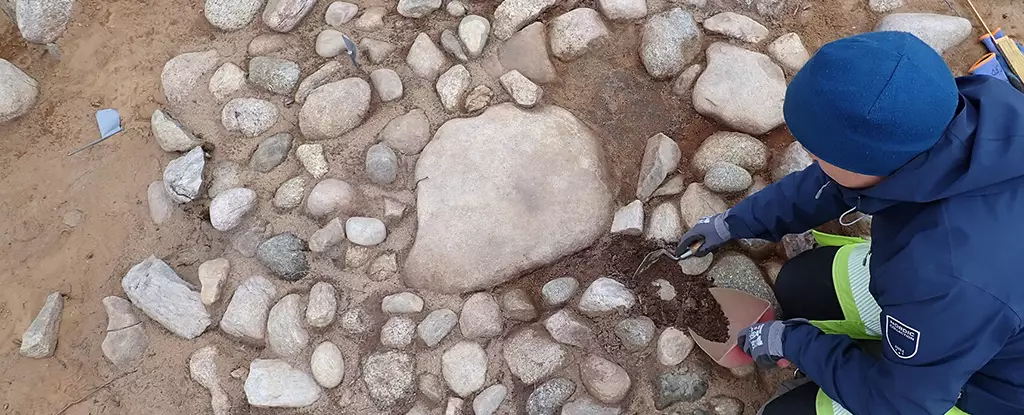The recent excavation of a 2,500-year-old graveyard site in Norway has unearthed some unsettling findings. The main cluster of graves consisted of 39 individual bodies, all of which were children under the age of six. While this may seem eerie, it is important to consider the historical context of the period. Infant mortality rates were relatively high during this time, which may explain the prevalence of child burials.
What sets this graveyard apart is the separation of the children’s graves from those of adults. While it is unclear why this distinction was made, archaeologists have noted that the graves were meticulously crafted and placed with care. The presence of cooking pits and fireplaces near the site suggests that gatherings and ceremonies were held in connection with the burials. This hints at a deeper cultural significance surrounding the burial practices of this community.
The graves at this site span a significant period in history, covering the transition between the Bronze Age and the Iron Age. This suggests that the burial site held importance for the community over a long period of time. The graves were located close to thoroughfares, indicating that they were a prominent feature of the landscape that would have been well-known to the community.
The graves at this site were round or oval in shape, with diameters of up to 2 meters. Each grave was meticulously crafted, with stones sourced from different locations and placed with precision. This unique construction sets these graves apart from others found in Europe. The significance of these structures and the effort that went into creating them is still a subject of research and speculation.
The findings from this excavation are now featured in an exhibition at the Museum of Cultural History in Oslo. Titled “In Memory of the Children,” the exhibition showcases the reconstructed stone graves and poses questions about the significance of the burial site. Visitors to the exhibition are invited to ponder the reasons behind the separate burial of children and the cultural traditions that were upheld for hundreds of years at this site.
While the excavation has provided valuable insights into the burial practices of this ancient community, there is still much to be discovered. Ongoing analysis of pottery fragments found at the site may reveal more about the lives and customs of the people who were buried there. As researchers delve deeper into the history of this site, it adds to the list of intriguing burial sites that have been uncovered over time.


Leave a Reply